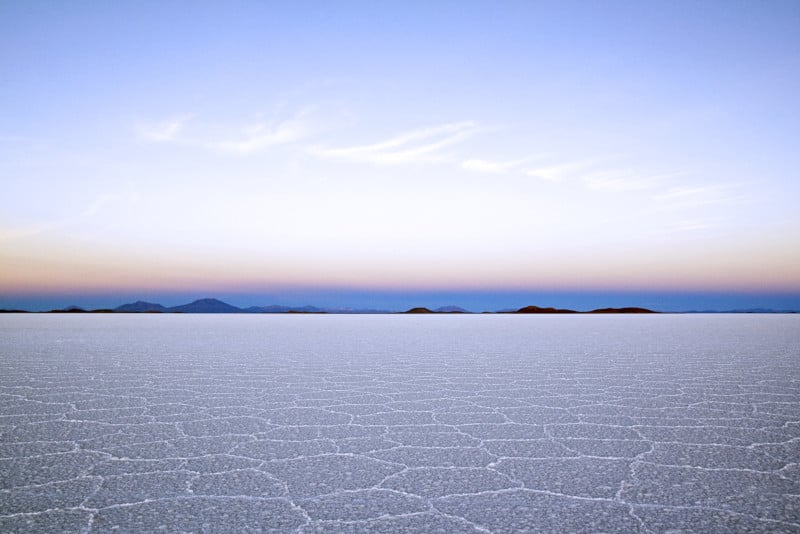
Salar de Uyuni Facts
- The term of Salar de Uyuni serves as the name for a mind-blowing location. In fact, this marvel of Nature easily ranks as the largest salt flat on earth. But that isn’t all. It also formed in an unbelievably remote and difficult to reach location.
- The entire location remains exceedingly smooth and flat throughout the entirety of the enormous expanse. Because of this, an incredible situation exists. The site is often actually used as a means of calibrating the altimeters aboard various satellites.
- A highly remarkable transformation occurs after a period of rain. This results in the deposition of an extremely thin and nearly perfectly calm layer of water. That deposition transforms the site into what serves as the largest mirror on earth.
- Along with the vast salt reserves to be found there, this wonder also holds another valuable resource. To be precise, Salar de Uyuni holds roughly 40% of the known reserves of lithium in the entire world. This makes the desolate site of immense value.
Related Articles
Salar de Uyuni Physical Description
To be clear, the sheer size of the astonishing feature currently known as Salar de Uyuni must be put into perspective. Amazingly, that’s because of the simple fact that it’s huge. Indeed, the incredible site covers an astounding area of roughly 4,086 sq mi (10,582 sq km).
That’s larger than 37 of the countries in the world. Yet, as impressive as that statistic is, it hardly serves as the only wondrous thing about the breathtaking site. First of all, the layer of salt actually has an average depth of more than an incredible 6 ft (2 m).
This enormous layer of salt additionally remains so smooth that the surface height does not vary by more than 3 ft (0.91 m) in any place. The already vast mineralogical wealth of Salar de Uyuni does not end at just its quantities of salt and lithium, however.
Because of its unique nature, this remarkable work of Nature also contains large quantities of numerous other important minerals. These valuable resources include such elements as potassium, magnesium, and even borax, just to name a few.
Salar de Uyuni Location, Formation, and Geology
In addition to its other qualities, Salar de Uyuni also boasts an astonishing placement. That holds true due to the fact that it formed in a quite rugged and remote location. That’s because the natural wonder formed in one of the highest sections of the Andes Mountains.
This wonder of geology sits within the boundaries of the country of Brazil, in South America. But it also sits at the impressive altitude of 11,995 ft (3,656 m) above sea level. Plus, it formed during the uplift of the mountains, as several ancient lakes were transformed.
Scientists estimate that this process of formation began somewhere between 30,000 – 42,000 years ago. Between that time and roughly 11,500 years ago, several other lakes formed. These features eventually evaporated, though, leading to the current situation.
Quite amazingly, the central area of Salar de Uyuni holds yet another surprise. That’s the fact that, in some areas, several small islands actually appear. Incredibly, these represent the tops of truly ancient volcanoes, and also a wonderful source of numerous fossils.
Features Sharing Its Region
Check out our other articles on 7 Spellbinding African Marvels, Pacific Sea Nettle, Northern Bald Ibis, Tibetan Sand Fox, Hornet Robberfly, Marine Iguana, Queen of the Andes
